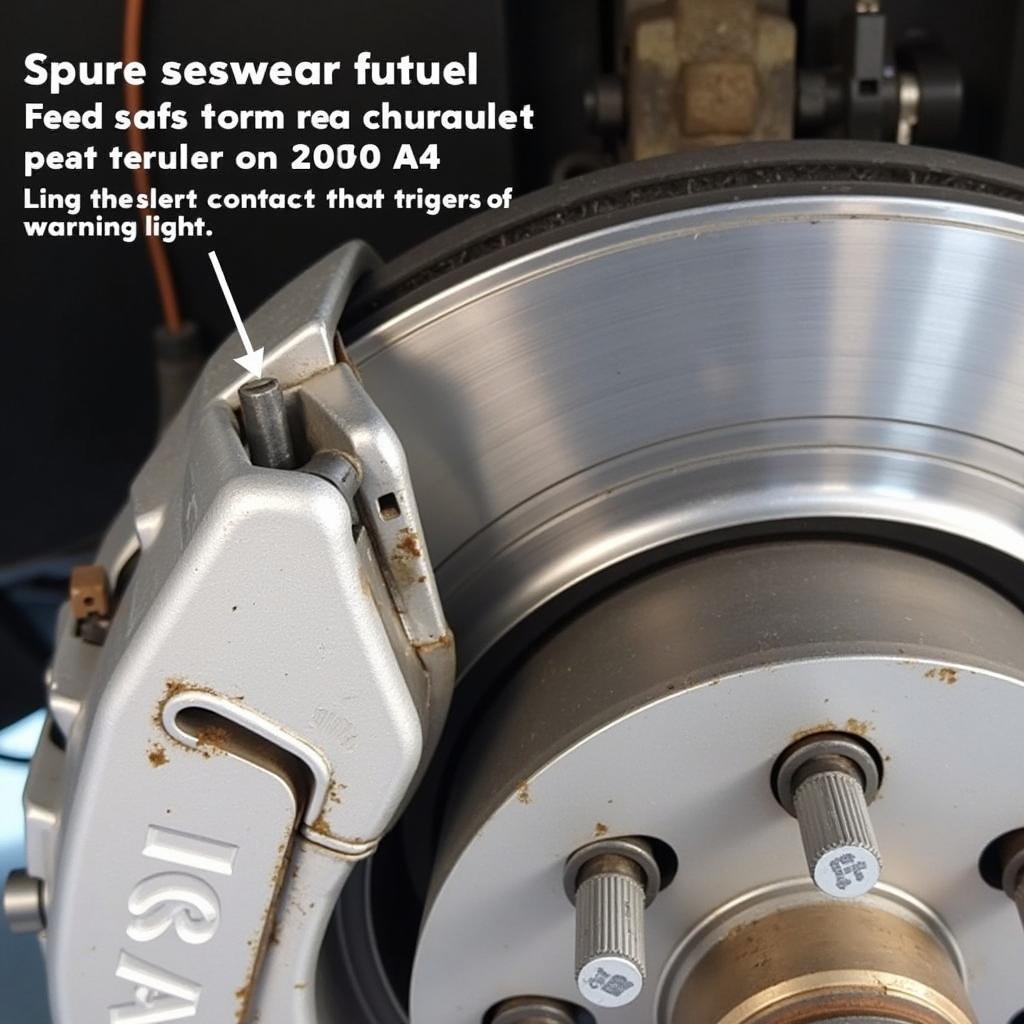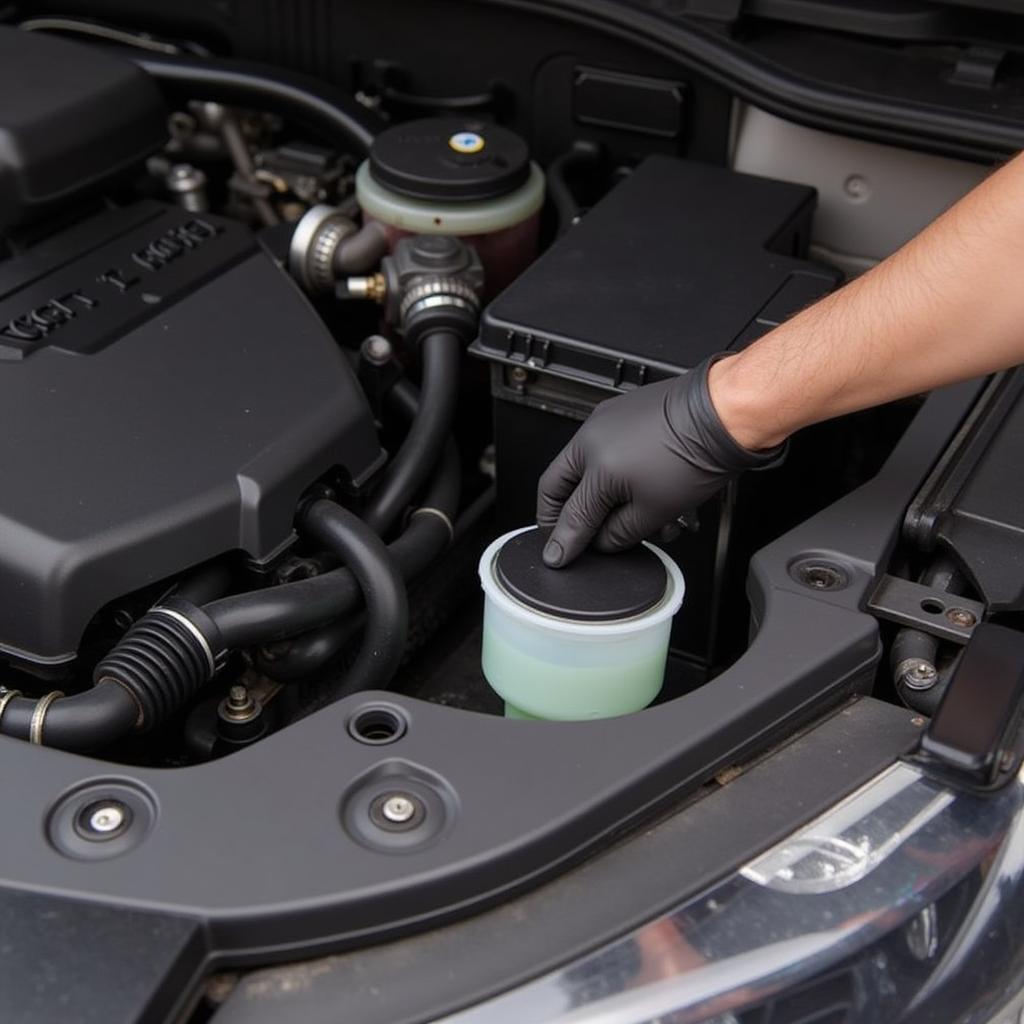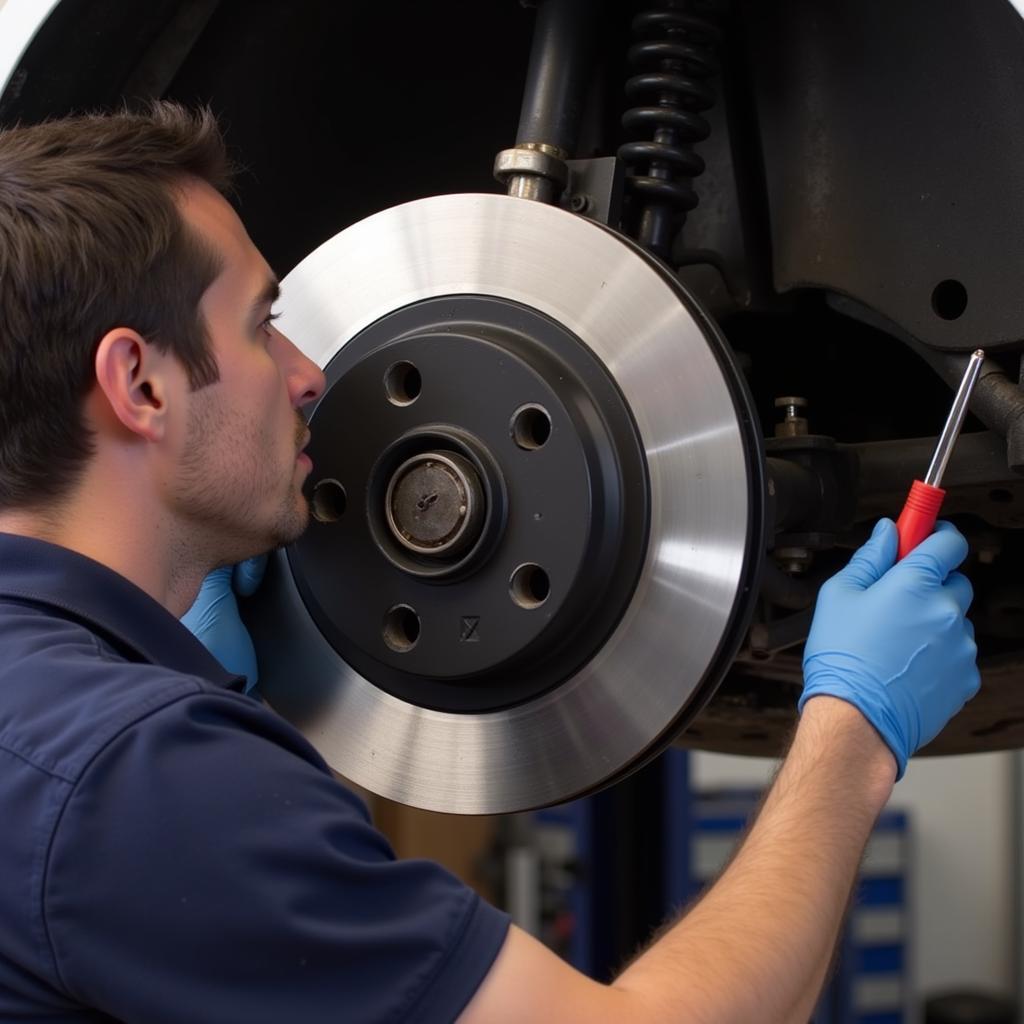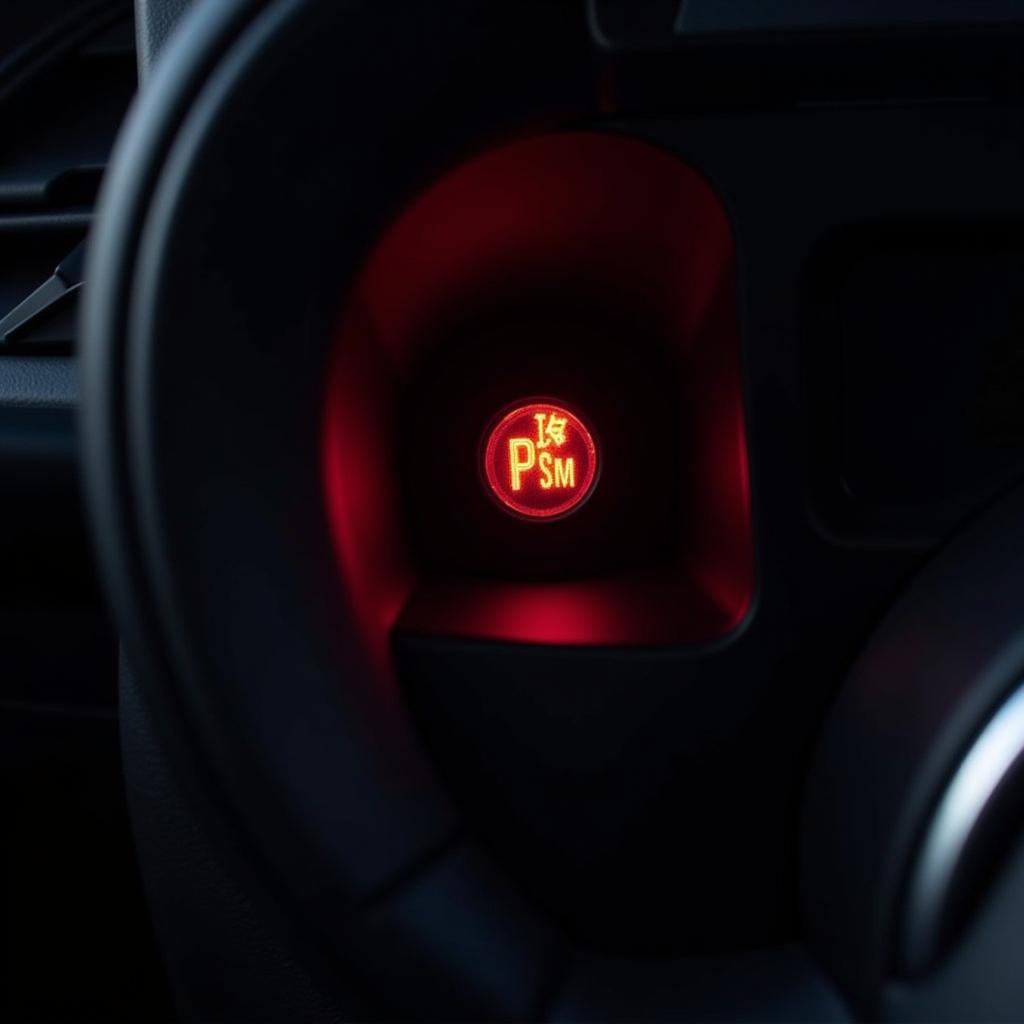Experiencing a brake pad warning light on your 2010 Audi A4, but no diagnostic trouble codes (DTCs) are showing up? This can be frustrating, but you’re not alone. Many A4 owners encounter this issue, and it’s often misdiagnosed. This comprehensive guide will help you pinpoint the problem and get your brakes back in top shape. We’ll cover potential causes, diagnostic steps, and solutions, even when your OBD-II scanner isn’t giving you any answers.
Understanding why a 2010 Audi A4 might display a brake pad warning light without any accompanying error codes requires a deeper look at the braking system. Sometimes, the issue isn’t the brake pads themselves, but other components related to the braking system. For example, a faulty brake pad wear sensor can trigger the warning light even if your pads have plenty of life left. This guide will explore all the possibilities and help you troubleshoot effectively. For instance, you might want to consider issues with the brake fluid level, the brake light switch, or even a wiring problem. You can learn more about similar issues with the parking brake malfunction warning light in another article on our site. 2010 audi a4 parking brake malfunction warning light
Why is My Brake Pad Light On with No Codes?
There are several reasons why your 2010 Audi A4 might display a brake pad warning light without storing any diagnostic trouble codes.
-
Faulty Brake Pad Wear Sensor: The most common culprit is a malfunctioning wear sensor. These sensors are small wires embedded in the brake pads. When the pads wear down to a certain point, the sensor wire makes contact with the rotor, completing a circuit and triggering the warning light. However, these sensors can sometimes break or become disconnected prematurely, causing a false alarm.
-
Low Brake Fluid: Low brake fluid can also trigger the warning light. Check your brake fluid reservoir and top it off if necessary. If the fluid level drops frequently, you may have a leak in your brake system, which requires immediate attention.
-
Brake Light Switch Issues: A faulty brake light switch can sometimes cause the brake pad warning light to illuminate, especially if it’s intermittently failing. This switch activates the brake lights when you press the brake pedal, and a malfunction can sometimes interfere with the brake warning system.
-
Wiring Problems: Damaged or corroded wiring in the brake system can also cause the warning light to come on without setting any codes. This is less common, but it’s worth checking if the other potential causes have been ruled out.
 2010 Audi A4 Brake Pad Wear Sensor Close-up
2010 Audi A4 Brake Pad Wear Sensor Close-up
How to Diagnose Brake Pad Warning with No Codes
Here are some steps to diagnose the issue:
-
Visually Inspect Brake Pads: Start by visually inspecting your brake pads. If they appear to have sufficient thickness, the problem likely lies elsewhere.
-
Check Brake Fluid Level: Ensure the brake fluid reservoir is full. If it’s low, top it off and monitor the level. A consistently low level indicates a leak.
-
Test Brake Light Switch: Test the brake light switch for proper operation. You can do this with a multimeter or by observing the brake lights when the pedal is pressed.
-
Inspect Wiring: Check the wiring leading to the brake pad wear sensors and other components for damage or corrosion.
Solutions for Brake Pad Warning with No Codes
Once you’ve identified the cause, here are the corresponding solutions:
-
Replace Brake Pad Wear Sensor: If the sensor is faulty, replace it. It’s a good idea to replace the sensors on both sides of the axle simultaneously.
-
Address Brake Fluid Leak: If you have a brake fluid leak, locate and repair it immediately. This may involve replacing brake lines, calipers, or other components.
-
Replace Brake Light Switch: A faulty brake light switch should be replaced. This is usually a simple and inexpensive fix.
-
Repair Wiring: Repair or replace any damaged or corroded wiring in the brake system.
 Checking Brake Fluid Reservoir in a 2010 Audi A4
Checking Brake Fluid Reservoir in a 2010 Audi A4
Is It Safe to Drive with the Brake Pad Warning Light On?
Driving with the brake pad warning light on, even without codes, is not recommended. While it may be a false alarm, it could also indicate a serious braking system issue. It’s crucial to diagnose and address the problem promptly. Ignoring the warning could lead to more extensive and costly repairs down the line. You might also find our article about turning off a brake switch warning light helpful. turn off brake switch warning light
“Regular brake system checks, including visual inspections and fluid level checks, are crucial for maintaining safety and preventing costly repairs,” says John Miller, a certified automotive technician with over 20 years of experience. He emphasizes the importance of addressing any warning lights promptly, even if there are no obvious symptoms.
Conclusion
A 2010 Audi A4 brake pads warning with no codes can be caused by several factors, ranging from a faulty sensor to a more serious brake system issue. By following the diagnostic steps outlined in this guide, you can identify the cause and implement the appropriate solution. Don’t ignore the warning light. Addressing the issue promptly ensures your safety and prevents potential damage to your vehicle. For further information about general brake warning lights on the 2010 A4, check out this resource: 2010 audi a4 brake warning light.
 Mechanic Inspecting 2010 Audi A4 Brake Pads
Mechanic Inspecting 2010 Audi A4 Brake Pads
FAQ
-
Can I reset the brake pad warning light myself? Yes, you can usually reset the light by addressing the underlying issue and disconnecting the battery for a short period.
-
How much does it cost to replace a brake pad wear sensor? The cost of a sensor is relatively low, but labor costs can vary depending on your location and mechanic.
-
How often should I check my brake fluid? It’s a good idea to check your brake fluid level at least once a month.
-
What does it mean if my brake fluid is dark? Dark brake fluid can indicate contamination and should be flushed and replaced.
-
Can I drive with a faulty brake light switch? While you may still be able to brake, a faulty switch can affect other systems and should be replaced.
-
What are the symptoms of a brake fluid leak? Symptoms include a low brake fluid level, a soft or spongy brake pedal, and decreased braking performance.
-
How long do brake pads typically last? Brake pad lifespan varies depending on driving habits and conditions, typically ranging from 30,000 to 70,000 miles.
“Always consult a qualified mechanic if you’re unsure about any aspect of your vehicle’s braking system,” advises Sarah Johnson, a senior automotive engineer with expertise in brake system design. She stresses that proper maintenance and timely repairs are essential for safe and reliable braking performance.

